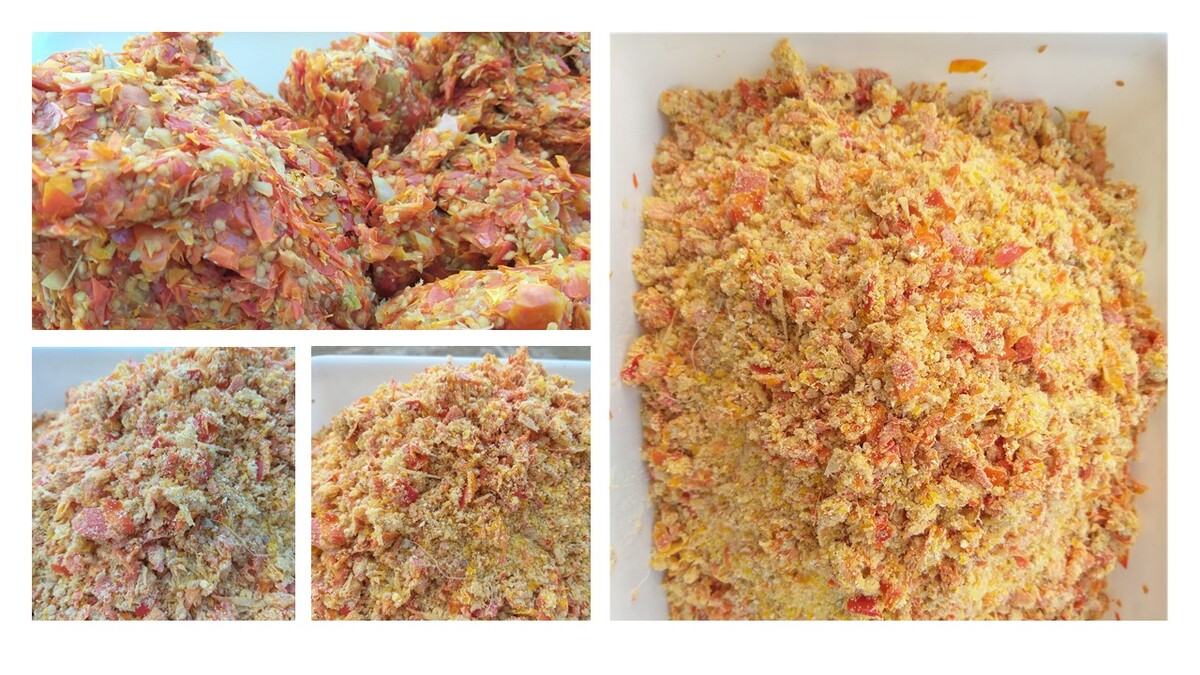Current issue
Online first
Archive
About the Journal
Editorial Office
Editorial Board
Copy right and self-archiving policy
Peer review process
Instructions for Reviewers
Printed version subscription
Abstracting and indexing
Contact
Instructions for Authors
Policies
General information
Open Access, Licensing terms, Commercial use and Copyright terms policies
Self-archiving policy and Archive policies
Article Correction and Withdrawal policy
Manuscript Submission policy
Authorship policy
Conflict of Interest policy
Language considerations policy
Plagiarism and Duplicate publications policy
Ethics policy
Review process policy
Acceptance of manuscripts policy
Online First Articles and Special Issues policies
Generative artificial intelligence (AI) policy
Advertising policy
Article publication charges
Policies
General information
Open Access, Licensing terms, Commercial use and Copyright terms policies
Self-archiving policy and Archive policies
Article Correction and Withdrawal policy
Manuscript Submission policy
Authorship policy
Conflict of Interest policy
Language considerations policy
Plagiarism and Duplicate publications policy
Ethics policy
Review process policy
Acceptance of manuscripts policy
Online First Articles and Special Issues policies
Generative artificial intelligence (AI) policy
Advertising policy
ORIGINAL PAPER
Effects of different methods and additives
on the quality of ensilage from rehydrated maize grain
with industrial tomato waste
1
Department of Animal Science and Technology, State University of Montes Claros, Avenue Reinaldo Viana, 2630, Janaúba, Minas Gerais, Brazil
Publication date: 2025-04-02
Corresponding author
F. P. Monção
Department of Animal Science and Technology, State University of Montes Claros, Avenue Reinaldo Viana, 2630, Janaúba, Minas Gerais, Brazil
Department of Animal Science and Technology, State University of Montes Claros, Avenue Reinaldo Viana, 2630, Janaúba, Minas Gerais, Brazil
J. Anim. Feed Sci. 2025;34(2):259-271
KEYWORDS
TOPICS
ABSTRACT
The objective of this study was to evaluate different rehydration
methods (water vs. industrial tomato waste, ITW) and additives in the ensiling
of ground maize grain in terms of losses and fermentation profile, chemical
composition, digestibility and ruminal degradability. The experiment was carried
out at the State University of Montes Claros, and included five treatments: 1)
maize silage rehydrated with water without additives, 2) maize silage rehydrated
with ITW without additives, 3) maize silage rehydrated with ITW and bacterialenzymatic
inoculant, 4) maize silage rehydrated with ITW and 2% molasses
powder, and 5) maize silage rehydrated with ITW, bacterial-enzymatic inoculant,
and 2% molasses powder, on a natural matter basis. A completely randomised
experimental design with five treatments and seven replicates was applied.
Polyvinyl chloride silos were used to incubate the ensiled mass, and they were
opened after 72 days. A higher (P < 0.01) pH value was observed in maize
silages rehydrated with ITW (mean 4.25), while greater losses of ammoniacal
nitrogen were observed in maize silages rehydrated with water compared to
those with ITW. Among the additives, silages rehydrated with ITW and bacterialenzymatic
inoculant showed reduced effluent losses. Additionally, silages
rehydrated with ITW and inoculant showed higher concentrations of acetic acid
(P < 0.01), and propionic acid (P < 0.01). ITW can be used for rehydration of
ground maize grain and ensiling because it does not alter dry matter losses and
improves the levels of nitrogenous compounds in the silage.
ACKNOWLEDGEMENTS
The authors would like to thank the Research Support Foundation of the State of Minas Gerais (FAPEMIG), the State University of Montes Claros (Unimontes), and the National Council for Scientific and Technological Development (CNPq) for their support with scholarships/research. We also extend our gratitude to the Bestpulp™ company (http://www.bestpulp.com.br/) for generously donating the wet tomato byproduct for the research.
FUNDING
This study was financed by the FAPEMIG.
CONFLICT OF INTEREST
The Authors declare that there is no conflict of interest.
REFERENCES (29)
1.
AFRC (Agricultural and Food Research Council), 1993. Energy and protein requirements of ruminants. CAB International, Walligford (UK).
2.
Almeida P.V., Rodrigues R.P., Gaspar M.C., Braga M.E.M., Quina M.J., 2021. Integrated management of residues from tomato production: Recovery of value-added compounds and biogas production in the biorefinery context. J. Environ. Manag. 299, 113505, https://doi.org/10.1016/j.jenv....
3.
Arcari M.A., Martins C.M.M.R., Tomazi T., Santos M.V., 2016. Effect of the ensiling time of hydrated ground corn on silage composition and in situ starch degradability. Braz. J. Vet. Res. Anim. Sci. 53, 60–71, https://doi.org/10.11606/issn.....
4.
Bernardes T.F., Daniel J.L.P., Adesogan A.T., McAllister T.A., Drouin P., Nussio L.G., Huhtanen P., Tremblay G.F., Bélanger G., Cai Y., 2018. Silage review: Unique challenges of silages made in hot and cold regions. J. Dairy Sci. 101, 4001-4019, https://doi.org/10.3168/jds.20....
5.
Bugatti V., Brachi P., Viscusi G., Gorrasi G., 2019. Valorization of tomato processing residues through the production of active bio-composites for packaging applications. Front. Mater. 6, 34, https://doi.org/10.3389/fmats.....
6.
Casali A.O., Detmann E, Valadares Filho S.C., Pereira J.C., Cunha M., Detmann K.S.C., Paulino M.F., 2009. Estimation of fibrous compounds contents in ruminant feeds with bags made from different textiles. R. Bras. Zootec. 38, 130–138, https://doi.org/10.1590/S1516-....
7.
Cruz F.N.F., Monção F.P., Rocha Júnior V.R., Alencar A.M.S., Rigueira J.P.S., Silva A.F., Miorin R.L., Soares A.C.M., Carvalho C.C.S., Albuquerque C.J.B., 2021. Fermentative losses and chemical composition and in vitro digestibility of corn grain silage rehydrated with water or acid whey combined with bacterial-enzymatic inoculant. Sem Ciênc. Agrár. 42, 3497–3514, https://doi.org/10.5433/1679-0....
8.
Detmann E., Silva L.F.C., Rocha G.C., Palma, M.N.N., Rodrigues J.P.P., 2021. Methods for food analysis. Métodos para análise de alimentos (in Portuguese). 2nd Edition. Produção Independente. Visconde do Rio Branco (Brazil), p. 350.
9.
Diogénes L.V., Pereira Filho J.M., Edvan R.L., Oliveira J.P.F., Nascimento R.R., Santos E.M., Alencar E.J.S., Mazza P.H.S., Oliveira R.L., Bezerra L.R., 2023. Effect of different additives on the quality of rehydrated corn grain silage: A systematic review. Ruminants 3, 425–444, https://doi.org/10.3390/rumina....
10.
Durães H.F., Oliveira E.R., Silva J.T. et al., 2024. Rehydrated corn ensiled with different concentrations of protease in the diet of dairy cows: impacts on intake, digestibility, ruminal and blood parameters, and milk yield and composition. New Zeal. J. Agr. Res. 67, 1–17, https://doi.org/10.1080/002882....
11.
Ferraretto L.F., Shaver R.D., Luck B.D., 2018. Silage review: recent advances and future technologies for whole-plant and fractionated corn silage harvesting. J. Dairy Sci. 101, 3937–3951, https://doi.org/10.3168/jds.20....
12.
Hammer O., Harper D.A.T., Ryan P.D., 2001. PAST: Paleontological statistics software package for education and data analysis. Pal. Electr. 4, 1–9.
13.
Jacovaci F.A., Salvo P.A.R., Jobim C.C., Daniel J.L.P., 2021. Effect of ensiling on the feeding value of flint corn grain for feedlot beef cattle: A meta-analysis. R. Bras. Zootec. 50, e20200111, https://doi.org/10.37496/rbz50....
14.
Jesus D.L.S., Rigueira J.P.S., Monção F.P., Rocha Júnior V.R., Silva A.F., Moura M.M.A., Souza J.F., Santos A.S., Silva M.F.P., Silvestre O.S., 2022. Fermentation profile and nutritional value of millet grain silages rehydrated with whey and/or molasses (in Portuguese). Semina: Ciênc. Agrár. 43, 2595–2606, https://doi.org/10.5433/1679-0....
15.
Jesus M.A., Monção F.P., Rigueira J.P.S., Rocha Júnior V.R., Gomes V.M., Delvaux Junior N.A., Pires D.A.A., Sales E.C.J., Carvalho C.C.S., Santos A.S., 2021. Effects of microbial inoculant and fibrolytic enzymes on fermentation quality and nutritional value of BRS capiaçu grass silage (in Portuguese). Semina: Ciênc. Agrár. 42, 1837–1852, https://doi.org/10.5433/1679-0....
16.
Jobim C.C., Nussio L.G., Reis R.A., Schmidt P., 2007. Methodological advances in evaluation of preserved forage quality (in Portuguese). R. Bras. Zootec. 36, 101–119, https://doi.org/10.1590/S1516-....
17.
Kaiser H.F., 1960. The application of electronic computers to factor analysis. Educ. Psychol. Meas. 20, 141–151, https://doi.org/10.1177/001316....
18.
Kung Jr L., Shaver R.D., Grant R.J., Schmidt R.J., 2018. Silage review: Interpretation of chemical, microbial, and organoleptic components of silages. J. Dairy Sci. 101, 4020–4033, https://doi.org/10.3168/jds.20....
19.
McDonald P., Henderson A.R., Heron S., 1991. The Biochemistry of Silage. 2nd edition. Chalcombe Publications. Marlow (UK), p. 340.
20.
Monção F.P., Rocha Júnior V.R. et al., 2024. Mixed silage of BRS capiaçu grass with spineless cactus: impacts on fermentative characteristics, chemical composition, and digestibility. J. Appl. Anim. Res. 52, 2401536, https://doi.org/10.1080/097121....
21.
Moran J.P., Weinberg Z.G., Ashbell G., Hen Y., Owen T.R., 1996. A comparison of two methods for the the evaluation of the aerobic stability of whole crop wheat silage. In: International Silage Conference 11, 1996. Aberystwyth University. Aberystwyth (UK), pp. 162–163.
22.
Muck R.E., Nadeau M.G., McAllister T.A., Contreras-Govea F.E., Santos, M.C., Kung Jr. L., 2018. Silage review: Recent advances and future uses of silage additives. J. Dairy Sci. 101, 3980-4000, https://doi.org/10.3168/jds.20....
23.
NRC (National Research Council), 2001. Nutrient requirements of dairy cattle, 7th revised edition. National Academies Press. Washington, DC (USA).
24.
Nocek J.E., 1988. In situ and other methods to estimate ruminal protein and energy digestibility: a review. J. Dairy Sci. 71, 2051–2069, https://doi.org/10.3168/jds.S0....
25.
Roseira J.P.S., Pereira O.G., Silveira T.C., Silva V.P., Alves W.S., Agarussi M.C.N., Ribeiro K.G., 2023. Effects of exogenous protease addition on fermentation and nutritive value of rehydrated corn and sorghum grains silages. Sci. Rep. 13, 7302, https://doi.org/10.1038/s41598....
26.
SAS, 2024. SAS Institute Inc. Cary, NC (USA), https://www.sas.com/ en_th/software/on-demand-for-academics.html.
27.
Silva N.C., Nascimento C.F., Nascimento F.A., Resende F.D., Daniel J.L.P., Siqueira G.R., 2018. Fermentation and aerobic stability of rehydrated corn grain silage treated with different doses of Lactobacillus buchneri or a combination of Lactobacillus plantarum and Pediococcus acidilactici. J. Dairy Sci. 101, 4158–4167, https://doi.org/10.3168/jds.20....
28.
Soares R.L., Oliveira J.S., Santos E.M. et al., 2024. Corn grain rehydration methods: Water vs. cactus pear in the diet for feedlot lambs. Small Rumin. Res. 230, 107151, https://doi.org/10.1016/j.smal....
29.
Vidyarthi S.K., Simmons C.W., 2020. Characterization and management strategies for process discharge streams in California industrial tomato processing. Sci. Total Environ. 723, 137976, https://doi.org/10.1016/j.scit....
Share
RELATED ARTICLE
We process personal data collected when visiting the website. The function of obtaining information about users and their behavior is carried out by voluntarily entered information in forms and saving cookies in end devices. Data, including cookies, are used to provide services, improve the user experience and to analyze the traffic in accordance with the Privacy policy. Data are also collected and processed by Google Analytics tool (more).
You can change cookies settings in your browser. Restricted use of cookies in the browser configuration may affect some functionalities of the website.
You can change cookies settings in your browser. Restricted use of cookies in the browser configuration may affect some functionalities of the website.




